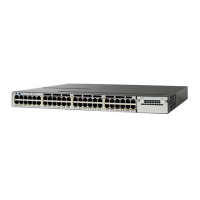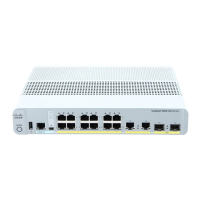Usage Guidelines
The command options marked with an asterisk in the table above have subcommands. For more information
on these subcommands, see the Related Commands section below.
Specify the host (NMS) that receives the traps by using the snmp-server host global configuration command.
If no trap types are specified, all trap types are sent.
When supported, use the snmp-server enable traps command to enable sending of traps or informs.
Though visible in the command-line help strings, the fru-ctrl, insertion, and removal keywords are not
supported on the device. The snmp-server enable informs global configuration command is not supported.
To enable the sending of SNMP inform notifications, use the snmp-server enable traps global
configuration command combined with the snmp-server host host-addr informs global configuration
command.
Note
Informs are not supported in SNMPv1.Note
To enable more than one type of trap, you must enter a separate snmp-server enable traps command for
each trap type.
Examples
This example shows how to enable more than one type of SNMP trap:
Device(config)# snmp-server enable traps cluster
Device(config)# snmp-server enable traps config
Device(config)# snmp-server enable traps vtp
Related Commands
DescriptionCommand
Generates STP bridge MIB traps.
snmp-server enable traps bridge
Enables data-collection-MIB notifications.
snmp-server enable traps bulkstat
Enables SNMP CISCO-CALLHOME-MIB traps.
snmp-server enable traps call-home
Enables SNMP CEF traps.
snmp-server enable traps cef
Enables CPU notifications.
snmp-server enable traps cpu
Enables SNMP environmental traps.
snmp-server enable traps envmon
Enables SNMP errdisable notifications.
snmp-server enable traps errdisable
Enables SNMP flash notifications.
snmp-server enable traps flash
Enables IS-IS traps.
snmp-server enable traps isis
Command Reference, Cisco IOS XE Everest 16.5.1a (Catalyst 3650 Switches)
533
snmp-server enable traps
